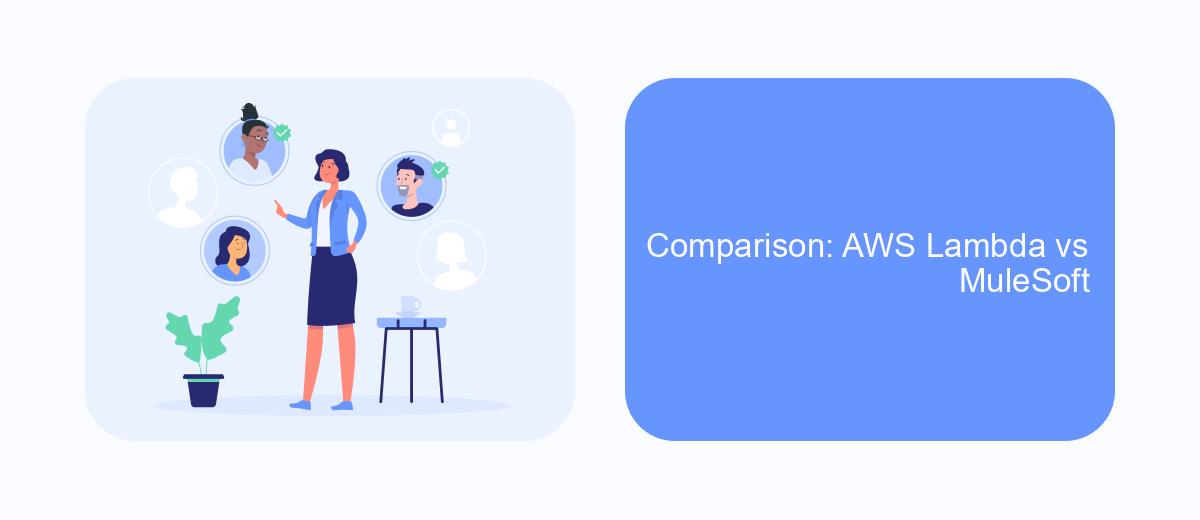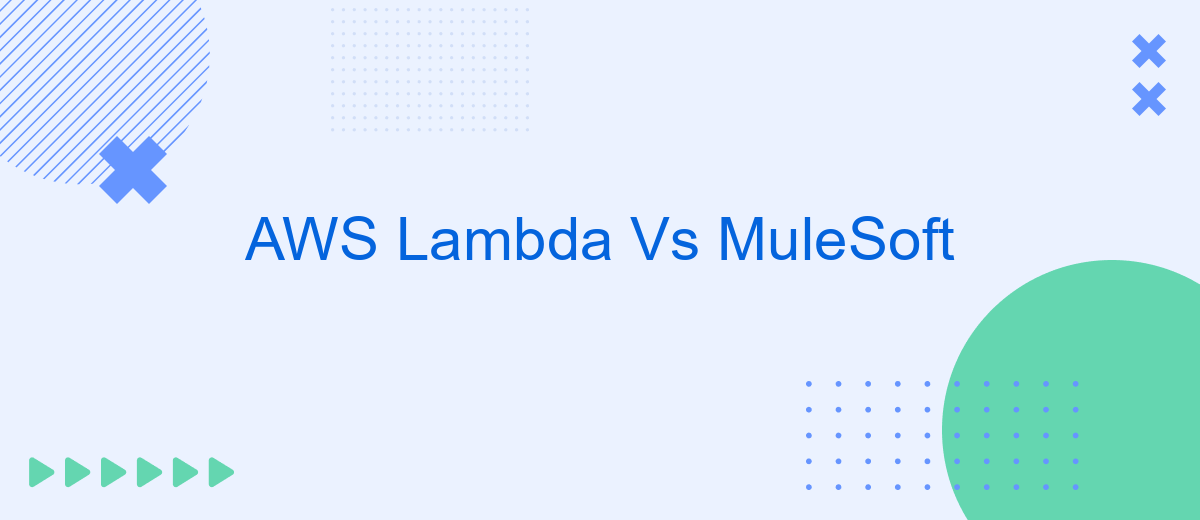In the rapidly evolving landscape of cloud computing and integration, AWS Lambda and MuleSoft have emerged as powerful tools for developers and businesses alike. AWS Lambda offers a serverless computing environment, while MuleSoft provides a comprehensive integration platform. This article delves into the key differences, advantages, and use cases of AWS Lambda vs MuleSoft, helping you make an informed decision for your specific needs.
Introduction
In today's rapidly evolving digital landscape, businesses are constantly seeking efficient ways to integrate their various applications and services. AWS Lambda and MuleSoft have emerged as two leading solutions in this space, each offering unique features and capabilities. Understanding the strengths and differences of these platforms can help organizations make informed decisions about which tool best suits their integration needs.
- AWS Lambda: A serverless compute service that allows you to run code without provisioning or managing servers.
- MuleSoft: An integration platform that enables businesses to connect applications, data, and devices with ease.
Choosing between AWS Lambda and MuleSoft depends on several factors, including the complexity of your integration requirements, the need for real-time data processing, and the level of customization required. Additionally, services like SaveMyLeads can further simplify the integration process by automating data transfers between various platforms, allowing businesses to focus on their core operations.
AWS Lambda Overview

AWS Lambda is a serverless computing service provided by Amazon Web Services (AWS) that allows developers to run code without provisioning or managing servers. It automatically scales applications by running code in response to specific events, such as changes to data in an S3 bucket or updates to a DynamoDB table. Developers only need to pay for the compute time consumed, making it a cost-effective solution for many use cases. AWS Lambda supports multiple programming languages, including Node.js, Python, and Java, providing flexibility in development.
One of the key advantages of AWS Lambda is its seamless integration with other AWS services, enabling developers to create complex, event-driven architectures. For example, Lambda functions can be triggered by Amazon S3, DynamoDB, Kinesis, and more. Additionally, AWS Lambda can be integrated with third-party services like SaveMyLeads, which helps automate workflows by connecting various applications and services. This integration capability allows businesses to streamline operations and improve efficiency without extensive coding or manual intervention.
MuleSoft Overview

MuleSoft is a comprehensive integration platform that enables businesses to connect applications, data, and devices seamlessly. It provides a unified solution for API management, data integration, and application connectivity, making it easier for organizations to streamline their operations and improve efficiency.
- API-led Connectivity: MuleSoft’s API-led approach allows for the creation of reusable APIs, which can be easily managed and monitored through the platform.
- Data Integration: MuleSoft supports various data formats and protocols, ensuring that data can flow smoothly between different systems.
- Cloud and On-Premise Integration: The platform offers robust tools for integrating both cloud-based and on-premises applications, providing flexibility in deployment.
- SaveMyLeads Integration: MuleSoft can leverage services like SaveMyLeads to automate the process of lead management, reducing manual effort and enhancing productivity.
By using MuleSoft, businesses can achieve greater agility and faster time-to-market for their digital initiatives. Its powerful integration capabilities ensure that disparate systems can work together efficiently, driving innovation and growth.
Comparison: AWS Lambda vs MuleSoft

When comparing AWS Lambda and MuleSoft, it's essential to understand their core functionalities and use cases. AWS Lambda is a serverless compute service that automatically manages the underlying infrastructure, allowing developers to focus on writing code. MuleSoft, on the other hand, is an integration platform for connecting applications, data, and devices both on-premises and in the cloud.
While AWS Lambda excels in executing code in response to events, MuleSoft specializes in seamless integration and API management. AWS Lambda is ideal for tasks such as data processing, real-time file processing, and running backend services. MuleSoft provides tools for designing, building, and managing APIs, making it a robust solution for complex integration needs.
- Scalability: AWS Lambda automatically scales with the number of requests.
- Integration: MuleSoft offers pre-built connectors for various applications and services.
- Cost: AWS Lambda charges based on compute time, while MuleSoft has a subscription-based pricing model.
- Ease of Use: AWS Lambda is straightforward for deploying code, whereas MuleSoft provides a comprehensive suite for integration.
For businesses looking to streamline their integration processes, services like SaveMyLeads can complement these platforms by automating lead data transfers between various applications, thus enhancing overall efficiency. Ultimately, the choice between AWS Lambda and MuleSoft depends on the specific requirements of your project and the level of integration needed.
Conclusion
In conclusion, both AWS Lambda and MuleSoft offer robust solutions for different aspects of application development and integration. AWS Lambda excels in serverless computing, providing a scalable and cost-effective environment for running code without the need for server management. It is particularly well-suited for event-driven applications and microservices architectures, allowing developers to focus on writing code rather than managing infrastructure.
On the other hand, MuleSoft stands out in the realm of integration, offering a comprehensive platform for connecting applications, data, and devices. Its strong suite of tools for API management and integration makes it ideal for enterprises looking to streamline their workflows and ensure seamless data exchange across systems. For businesses seeking to automate their integrations further, services like SaveMyLeads can complement MuleSoft by providing easy-to-use solutions for connecting various platforms. Ultimately, the choice between AWS Lambda and MuleSoft depends on the specific needs and goals of the organization, whether it is serverless computing or extensive integration capabilities.
FAQ
What is AWS Lambda and how does it differ from MuleSoft?
Can AWS Lambda and MuleSoft be used together?
Which is better for real-time data processing, AWS Lambda or MuleSoft?
What are the primary use cases for AWS Lambda and MuleSoft?
How do these services handle automation and integration with other platforms?
Personalized responses to new clients from Facebook/Instagram. Receiving data on new orders in real time. Prompt delivery of information to all employees who are involved in lead processing. All this can be done automatically. With the SaveMyLeads service, you will be able to easily create integrations for Facebook Lead Ads and implement automation. Set up the integration once and let it do the chores every day.
